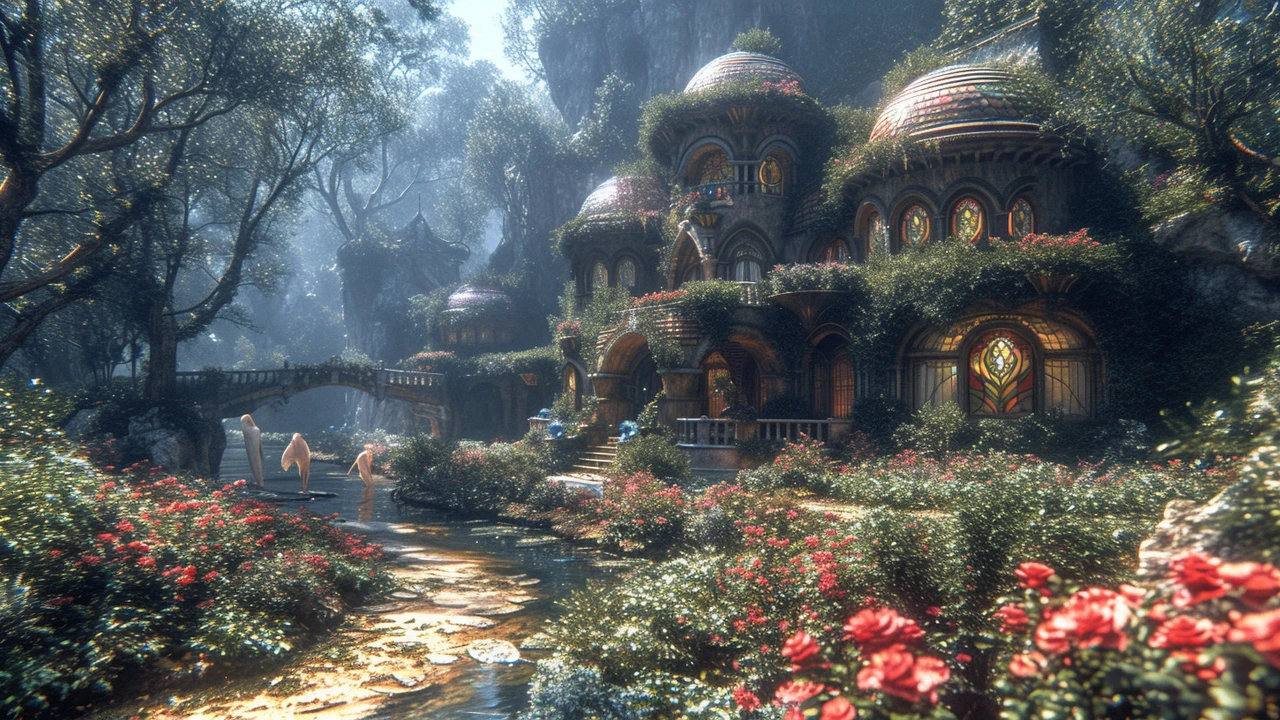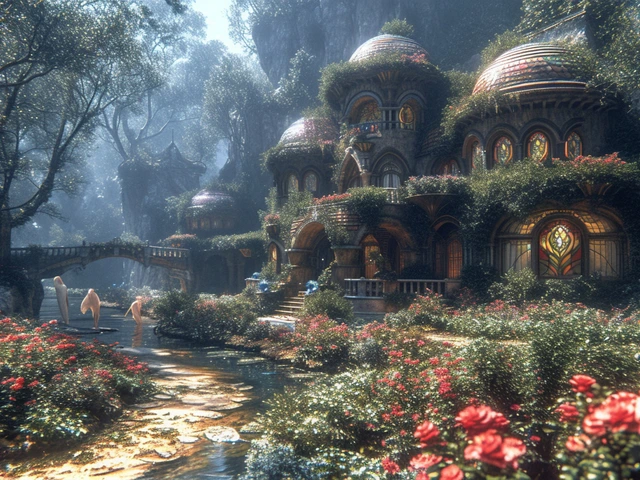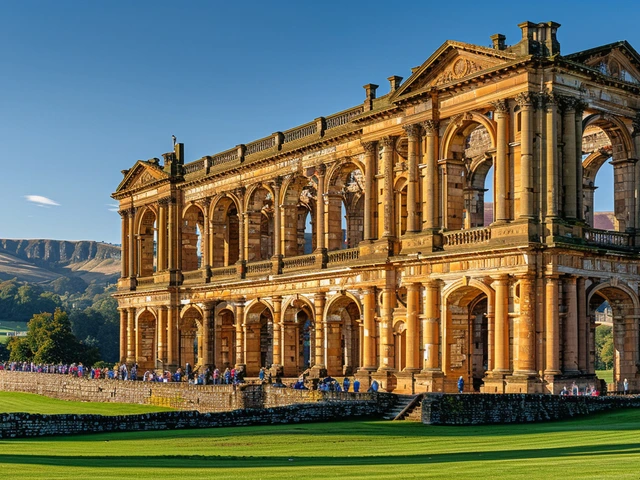The Dawn of Art Nouveau
When you think of architecture that enthralls the senses with its flowing lines, nature-inspired forms, and intricate patterns, what pops up in your mind? If you've whispered 'Art Nouveau' to yourself, then you, my friend, have hit the nail right on the head. It's like the world was chugging along, happily erecting buildings in various architectural styles, when Art Nouveau burst onto the scene, tapping into nature's portfolio and liberally splashing its motifs over everything from the front doors of Paris to the street lamps of Prague. Now, I'm not one to play favourites, but if I were, Art Nouveau would be high on my list – it's like a visual feast that refuses to be boring.
Picture this: It's the end of the 19th century, industrialization is at its peak, and there's a collective yearning for something 'organic'. Enter Art Nouveau, stage right, all sinuous lines and nature-inspired motifs. It's as if architecture suddenly decided to throw a massive party, and the dress code was 'whiplash curves'. The movement happened so suddenly, so all-encompassingly, that it was almost as if Mother Nature herself had taken up a drawing board and said, 'Let’s jazz things up a bit'.
The Architects Who Made It Famous
You know, it's not always just about the style; it's also about the maestros who wielded their drafting tools like wizard wands to bring Art Nouveau to life. Look at Antoni Gaudí, he looked at a design and thought, 'Needs more curves’. You've got Victor Horta, whose staircases alone are more intricate than my family’s recipe for lasagna – and that’s saying something. Then there's Hector Guimard, who put Paris metro on the map quite literally with his iconic, green-cast iron entrances. They didn't just design buildings; they composed symphonies in steel, stone, and glass.
I have to tell you, there’s something whimsical about architects who decide that straight lines are passé and instead opt for forms that mimic stems and blossoms. It's as if they’d collaborated with elves to magic these structures into existence. And let's not forget the women who made a mark in this movement – like Julia Morgan and Eileen Gray, who turned architectural norms on their head and added a delicate touch to those twisty, turny lines!
Signature Elements of Art Nouveau Architecture
Oh, where to begin? Imagine walking by a building that looks like it's alive, with a façade undulating like waves, ironwork that spirals like tendrils, and windows that seem less like inanimate glass and more like peacock feathers. You've got yourself an Art Nouveau building. The key elements are so distinct, it's like they're hosting a nature-themed masquerade ball on the building's exterior. There's stained glass that plays with light like a prism, wrought-iron balustrades that snake around a staircase, and mosaic tiles that blanket a surface with a story.
Not to be outdone, the interiors had to match too, with furniture that wouldn't look out of place in an enchanted forest, light fixtures resembling blooming flowers, and wallpaper that brought whole gardens indoors. Art Nouveau didn't stop at the doorstep; it invited itself in for tea and made itself very comfortable. And, by the way, if your walls are currently bare and yearning for character, throwing in some Art Nouveau elements is not a bad way to go. Be warned though, you may start to believe you’re living in some sort of fairytale — and that’s not a bad thing unless squirrels start asking you for directions to the nearest acorn stash.
Art Nouveau Around the World
Sit tight, because we’re going on a little spin around the globe, Art Nouveau style. You might want to start in Brussels, where Horta practically turned the city into a catalogue for Art Nouveau enthusiasts – think of it as the grand buffet of architectural delights. Hop over to Paris and you'll see the movement whisper 'Liberté, égalité, fraternité' into the structures that embody French charm. Slide into Spain, and you’ll find Barcelona basking in the whimsical wonders of Gaudí’s imaginative genius. There’s no ignoring the scintillating presence of Art Nouveau in Prague and Budapest either, where buildings look as if they've sprouted up from the pages of a storybook.
You see, Art Nouveau wasn't just a European vacation; it travelled well across the pond too. The United States flirted with the style, best exemplified by Louis Sullivan in Chicago with his 'form follows function' philosophy, which now kind of sounds like an Instagram influencer's fitness mantra. And let's not forget Riga, the capital of Latvia, teeming with over 800 Art Nouveau buildings — it's like they were aiming to win a gold medal in the architectural Olympics and quite frankly, they might just deserve it. From Moscow to Vienna, this art movement left its indelible, curvy mark all over the map.
Influence on Other Artistic Areas
Like a chatty extrovert at a party, Art Nouveau didn't stick to its own little corner. No sir, it mingled and left its flowery scent all over the place. Graphic design, for one, was entranced by its allure, with posters and advertisements suddenly looking like they were gateways to enchanted forests. Take Alphonse Mucha, for instance. The guy took lithography and turned it into the Mona Lisa of printmaking – except instead of Mona Lisa’s ambiguous smile, you had the languid forms and floral halos of Mucha’s maidens making you think, 'Alright, maybe I do need that bicycle or that biscuit.'
In the world of jewelry, designers like René Lalique took to crafting pieces that wouldn't look out of place in a mermaid's treasure chest. Then there's furniture – let me tell you, an Art Nouveau chair isn't just for sitting; it’s a lesson in botany given its vine and leaf patterns. In the midst of all this, the movement also entwined its tendrils into glass art, with Louis Comfort Tiffany treating his lamps not as mere sources of light but as glowing, stained-glass botanical specimens. It’s like every artistic field was under a spell, and Art Nouveau was the enchanting sorcerer.
The Decline and Resurgence of Art Nouveau
But alas, every party must come to an end and so did the flamboyance of Art Nouveau. It's as if one morning, everyone woke up with a hangover from all the extravagance and decided to go back to the straight-laced ways of modernism and Art Deco. World War I rang the death knell for this artistic reverie, making the ornate seem frivolous in the face of sobering reality. Suddenly, what was once hailed as revolutionary, nature's pièce de résistance, got labeled as passé – a pretty face with not much else to offer.
Yet, like every good story with a dramatic arc, Art Nouveau experienced a revival. We can't help but circle back to the good stuff, can we? There's a certain timelessness about something that draws so heavily from nature because, well, nature's not going out of style any time soon. So, in the latter part of the 20th century, we saw a rekindling of interest, with restoration efforts breathing new life into old beauties and a new wave of creatives tipping their hats to the style. If you happen to stroll through an Art Nouveau district now, it’s like walking through a living museum, and the admission ticket is merely an appreciation for beauty.
Art Nouveau's Message and Legacy
What was Art Nouveau trying to say, really, with all its ornamental fanfare and organic motifs? Above all, it was about harmony – the idea that everything from a door handle to a grand facade deserved to be thoughtfully designed, beautifully crafted, and function in sync with its environment. It championed art in everyday life, shrugging off the notion that beautiful things belonged only in palaces and museums. The style democratized beauty – suddenly, even the layperson's home could don a decorative coat that would make it sing.
Art Nouveau's legacy, much like its designs, isn't rigid; it's fluid and ever-present. The movement has filtered through the ages to influence modern design philosophies, reminding us of the importance of integrating art with life. We have Art Nouveau to thank for prompting us to view our living spaces not just as shelters but as habitats capable of inspiring and rejuvenating us. It’s a reminder that when we allow creativity to seep into the fabric of our daily lives, we're breathing life into the mundane, turning it into something extraordinary.
How to Spot Art Nouveau Today
Now you might be asking yourself, 'Theodore, how do I spot Art Nouveau on my afternoon stroll?' My answer is to keep your eyes peeled for the dance of natural elements integrated into architecture. Look for curvilinear lines that make the building look as if it's in a state of rhythmic motion. Be on the lookout for intricate ironwork, ceramic tiles that tell a story, and stained glass that catches the light in just the right way. If a building looks like it would be the perfect home for a fairy tale character or a talking flower, you’re probably staring right at an Art Nouveau masterpiece.
Of course, living in a bustling city or a modernized area might make an Art Nouveau encounter rare, but they do pop up like delightful Easter eggs in the urban landscape. And if you're really keen, why not venture out to an Art Nouveau hotspot like Brussels, Paris, or Barcelona, to immerse yourself in the full experience? Or simply take a virtual tour online; there's a treasure trove of Art Nouveau click-bait waiting for the eager explorer. In the end, spotting Art Nouveau is about letting your imagination roam and finding joy in the architectural poetry that is this brilliant movement.
I hope you’ve enjoyed this swirled stroll down Art Nouveau lane as much as I have. In a world where cookie-cutter structures too often dominate the skyline, the whimsy and wonder of Art Nouveau serve as a pleasant counterbalance, a visual sonnet paying homage to the art of organic beauty and nuanced detail. Until we meet again, keep your eyes and hearts open to the elegance of yesteryears that continue to sprinkle magic dust on our everyday lives.




Leave a Comments